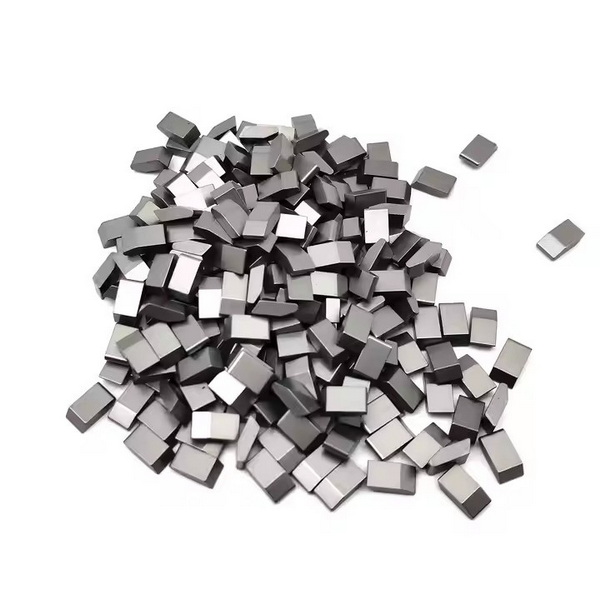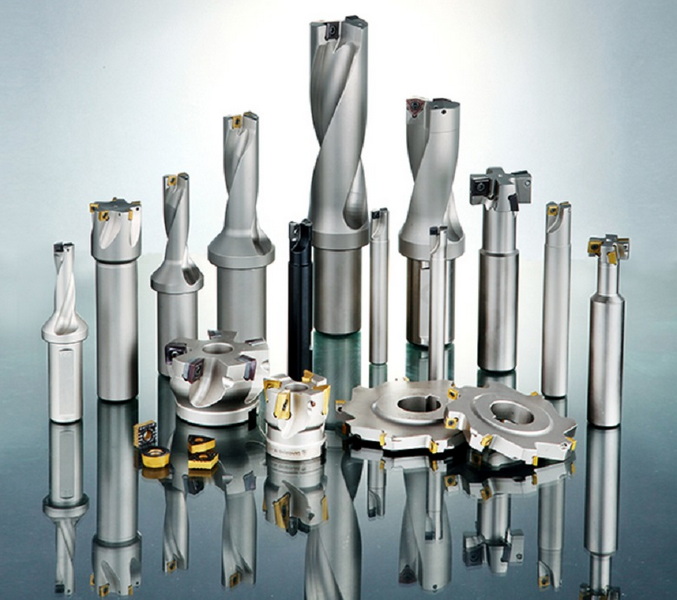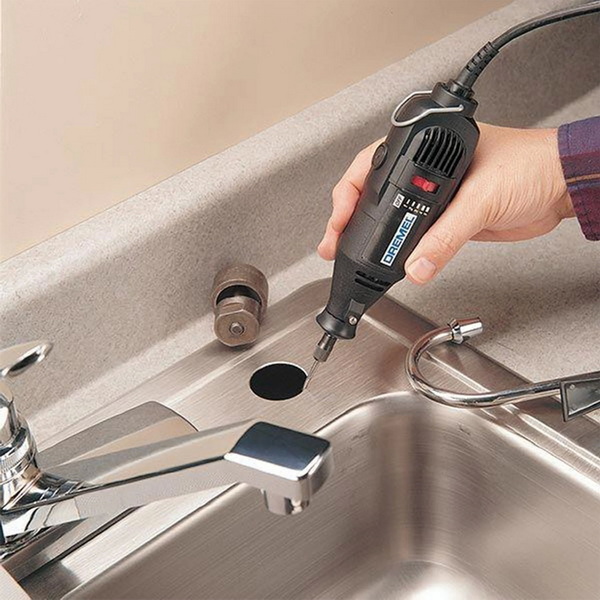Content Menu
● Introduction to Carbide and Tungsten Carbide
>> Composition and Properties
● Applications of Carbide and Tungsten Carbide
>> Tungsten Carbide Applications
>> General Carbide Applications
● Comparison of Carbide and Tungsten Carbide
>> Hardness and Wear Resistance
>> Thermal Properties
>> Cost and Manufacturing Complexity
● Environmental and Health Considerations
● Future Developments
● Conclusion
● Frequently Asked Questions
>> 1. What is the primary difference between tungsten and tungsten carbide?
>> 2. Why is tungsten carbide more expensive than other carbides?
>> 3. What are the advantages of using tungsten carbide in cutting tools?
>> 4. How does tungsten carbide compare to high-speed steel (HSS) in terms of performance?
>> 5. What are some common applications of silicon carbide?
● Citations:
When comparing carbide and tungsten carbide, it's essential to understand their properties, applications, and differences. Both materials are widely used in industrial settings due to their hardness and durability. However, tungsten carbide stands out for its exceptional wear resistance and thermal stability, making it a preferred choice in demanding applications.

Introduction to Carbide and Tungsten Carbide
Carbide generally refers to a broad category of materials that include carbon and another element, often metals. Tungsten carbide (WC) is a specific type of carbide, composed primarily of tungsten and carbon, which offers superior hardness and wear resistance compared to other carbides.
Composition and Properties
- Tungsten Carbide (WC): It is a chemical compound consisting of tungsten and carbon atoms, typically arranged in a hexagonal crystal structure. The most common form contains about 94% tungsten and 6% carbon by weight. Tungsten carbide is often combined with metallic binders like cobalt or nickel to enhance its toughness and ductility, forming a cermet (ceramic-metallic composite). This combination allows tungsten carbide to be used in a variety of applications where both hardness and impact resistance are required.
- General Carbides: These can include silicon carbide (SiC), titanium carbide (TiC), and others, each with unique properties tailored for specific applications. Silicon carbide, for example, is used in abrasives and semiconductors due to its high thermal conductivity and hardness. Titanium carbide is used in wear-resistant coatings and cutting tools due to its high melting point and hardness.
Applications of Carbide and Tungsten Carbide
Both carbide and tungsten carbide are used in various industries, but their applications differ based on their properties:
Tungsten Carbide Applications
- Cutting Tools: Tungsten carbide is widely used in cutting tools, such as drill bits and saw blades, due to its hardness and wear resistance. It maintains its cutting edge longer than high-speed steel (HSS), leading to increased productivity and better surface finishes. The use of tungsten carbide in cutting tools also allows for higher cutting speeds, which can significantly reduce production time and costs.
- Wear Parts: It is used in wear parts for industries like mining, construction, and oil & gas due to its ability to withstand abrasive environments. Tungsten carbide wear parts can extend the lifespan of equipment, reducing downtime and maintenance costs.
- Jewelry: Tungsten carbide is also used in jewelry due to its hardness and resistance to scratches. It is particularly popular for wedding bands because it maintains its appearance over time.
General Carbide Applications
- Abrasive Materials: Silicon carbide is commonly used as an abrasive in sandpaper and grinding wheels due to its hardness. It is effective in smoothing and polishing surfaces, especially in woodworking and metalworking.
- Semiconductors: Silicon carbide is used in the production of semiconductors because of its high thermal conductivity and electrical properties. It is particularly useful in high-power electronic devices where heat dissipation is critical.
- Ceramic Coatings: Titanium carbide is used in wear-resistant coatings for tools and machinery. These coatings enhance the durability of components by protecting them from wear and corrosion.

Comparison of Carbide and Tungsten Carbide
When deciding between carbide and tungsten carbide, several factors should be considered:
Hardness and Wear Resistance
- Tungsten Carbide: It ranks between 9 and 9.5 on the Mohs hardness scale, making it one of the hardest materials known, second only to diamond. Its exceptional wear resistance extends the lifespan of tools and components significantly.
- General Carbides: While other carbides like silicon carbide are hard, they generally do not match the hardness of tungsten carbide. However, silicon carbide is still very effective in abrasive applications.
Thermal Properties
- Tungsten Carbide: It has a high melting point of approximately 2,870°C (5,200°F), ensuring stability in high-temperature applications. Its thermal conductivity facilitates efficient heat dissipation, which is crucial in cutting tools.
- General Carbides: Silicon carbide also has a high thermal conductivity but is more brittle than tungsten carbide. This brittleness limits its use in applications where impact resistance is necessary.
Cost and Manufacturing Complexity
- Tungsten Carbide: It is more expensive due to its complex manufacturing process, which involves combining tungsten and carbon with metallic binders. However, its durability often offsets the initial cost over time by reducing the need for frequent replacements.
- General Carbides: Other carbides can be less expensive but may not offer the same level of performance as tungsten carbide. The choice between them often depends on the specific requirements of the application and the budget available.
Environmental and Health Considerations
In recent years, there has been growing concern about the environmental and health impacts of tungsten carbide production. The mining of tungsten can have environmental consequences, such as soil and water pollution. Additionally, the processing of tungsten carbide involves the use of cobalt, which has raised health concerns due to its potential toxicity. Efforts are being made to develop more sustainable and safer production methods.
Future Developments
Research into new carbide materials and manufacturing techniques is ongoing. Advances in nanotechnology and composite materials are expected to improve the properties of carbides further, potentially leading to even more efficient and durable tools and components. Additionally, there is a push towards recycling tungsten carbide to reduce waste and conserve resources.
Conclusion
In summary, while both carbide and tungsten carbide have their strengths, tungsten carbide is generally superior in terms of hardness, wear resistance, and thermal stability. Its applications in cutting tools, wear parts, and jewelry highlight its versatility and durability. However, the choice between carbide and tungsten carbide should be based on specific application requirements and budget considerations.

Frequently Asked Questions
1. What is the primary difference between tungsten and tungsten carbide?
Tungsten is a dense, hard metal used in various applications like electrical contacts and alloying steel. Tungsten carbide, on the other hand, is a compound of tungsten and carbon, offering superior hardness and wear resistance, making it ideal for cutting tools and wear-resistant parts.
2. Why is tungsten carbide more expensive than other carbides?
Tungsten carbide is more expensive due to its complex manufacturing process, which involves combining tungsten and carbon with metallic binders like cobalt or nickel. This process enhances its toughness and ductility, making it suitable for demanding applications.
3. What are the advantages of using tungsten carbide in cutting tools?
Tungsten carbide cutting tools offer superior hardness and wear resistance, leading to longer tool life, higher cutting speeds, and better surface finishes. They also require lower cutting forces, making them more efficient in terms of power consumption.
4. How does tungsten carbide compare to high-speed steel (HSS) in terms of performance?
Tungsten carbide tools are significantly harder and more wear-resistant than HSS tools, allowing them to operate at higher speeds and maintain their cutting edge longer. However, HSS tools are less expensive and easier to sharpen.
5. What are some common applications of silicon carbide?
Silicon carbide is commonly used as an abrasive in sandpaper and grinding wheels due to its hardness. It is also used in the production of semiconductors because of its high thermal conductivity and electrical properties.
Citations:
[1] https://www.linde-amt.com/resource-library/articles/tungsten-carbide
[2] https://shop.machinemfg.com/the-pros-and-cons-of-tungsten-carbide-a-comprehensive-guide/
[3] https://www.hyperionmt.com/en/products/Wear-Parts/carbide-vs-steel/
[4] https://www.alamy.com/stock-photo/tungsten-carbide.html
[5] https://create.vista.com/photos/tungsten-carbide/
[6] https://konecarbide.com/tungsten-vs-tungsten-carbide-differences-explained/
[7] https://www.istockphoto.com/photos/tungsten-carbide
[8] https://www.istockphoto.com/photos/carbide
[9] https://www.linkedin.com/pulse/pros-cons-tungsten-carbide-cutting-tools-shijin-lei
[10] https://www.practicalmachinist.com/forum/threads/carbide-vs-tungsten-carbide-in-tool-realm.336544/
[11] https://www.larsonjewelers.com/pages/the-pros-cons-of-tungsten-carbide-rings
[12] https://primatooling.co.uk/cutting-material-comparison-pcd-vs-tct-vs-solid-carbide-vs-hss/
[13] https://www.carbide-part.com/blog/carbide-vs-tungsten-carbide/
[14] https://www.shutterstock.com/search/carbide
[15] https://www.freepik.com/free-photos-vectors/tungsten
[16] https://www.freepik.com/free-photos-vectors/carbide
[17] https://www.shutterstock.com/search/tungsten-metal
[18] https://stock.adobe.com/search?k=tungsten+carbide
[19] https://onmytoolings.com/zh-tw/cermet-inserts-vs-carbide-vs-cbn-vs-pcd/
[20] https://create.vista.com/photos/silicon-carbide/
















